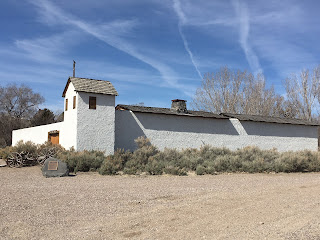The Ordeal of Olive Oatman: A True Story of the American West by Margaret Rau, Morgan Reynolds Incorporated, Greensboro, North Carolina, 1997.
The story of Olive Oatman is fantastic. I had not heard of this story until moving to Arizona and learned than the town of Oatman was named after her. Olive Oatman, with her family was emigrating from Independence Missouri to southern California in 1851-52.. They were an offshoot Mormon family, Brewsterites, which traveled with a group who felt that Salt Lake was not the correct destination. They traveled the Santa Fe Trail. Even they had disagreements and the group separated. The Oatman family, with the smaller group, made it to Tucson, where the group was further reduced as some decided to stay. Only three families continued on. They finally made it to Pimole amongst the Pima people. They were invited to stay, and only the Oatmans continued on, hoping to reach the Colorado River and Fort Yuma, 150 miles to the west. The crossed the Gila River, and finally made it to the plateau on the other side. It was on that plateau where they were met by a group of Native Americans, thought to be Apache but later determined to be Yavapai. After asking for tobacco and food, they finally manifested their true intentions, using clubs to bludgeon the pioneers. They killed the parents, mother who was eight months pregnant, and six siblings of Olive. She and her sister Mary Ann were taken captive. Her older brother Lorenzo was clubbed, but survived. Al the other family members were killed.
In captivity Olive and Mary Ann were made to to slave labor, providing food for the men but also being subject to ridicule. Mary Ann was often sick, but they were both always hungry. A trading party from the Mohave visited the camp, and the daughter of the chief insisted they trade for the slaves. They were eventually sold for two horses. The Mohave lived close to the Colorado River near present day Needles. They now received better treatment, but it was always feared they would run away. Consequently Olive was tattooed showing marks of being a slave so she would be returned if she attempted escape. Mary Ann became sick and died of starvation during a period where the Mohave were short of food. Olive considered escape, but withdrew this when another slave form a different Indian Tribe escaped and was captured and tortured to death.
However after five years in captivity, word of her existence reach fort Yuma. There people took interest and arranged to purchase her from the Mohave. After several failed attempts, they were finally successful. Olive was released to Fort Yuma, but the fort had to provide a fine horse. After being released she learned of her brother, Lorenzo still being alive. Olive's story was published widely in the newspaper. Lorenzo joined her in Yuma, and eventually a cousin who invited them to Oregon. The story of Lorenzo and Olive was published in a book. This lead to their being invited to tour the East telling their story. During this visit Olive met a man, John Fairchild, and they married and settled in Texas. They were childless but did adopt a child.
From this book, I learned that Olive Oatman had to part in the founding of Oatman which bears her name. It was named in her honor. Olive always insisted the Native Americans never violated her chastity. After her death, in 1903 however a man claimed to be her son by the son of the chief. He called himself John Oatman.
































































